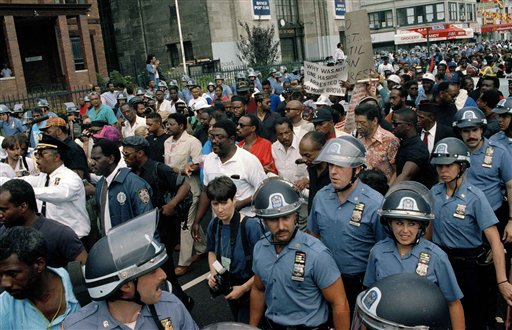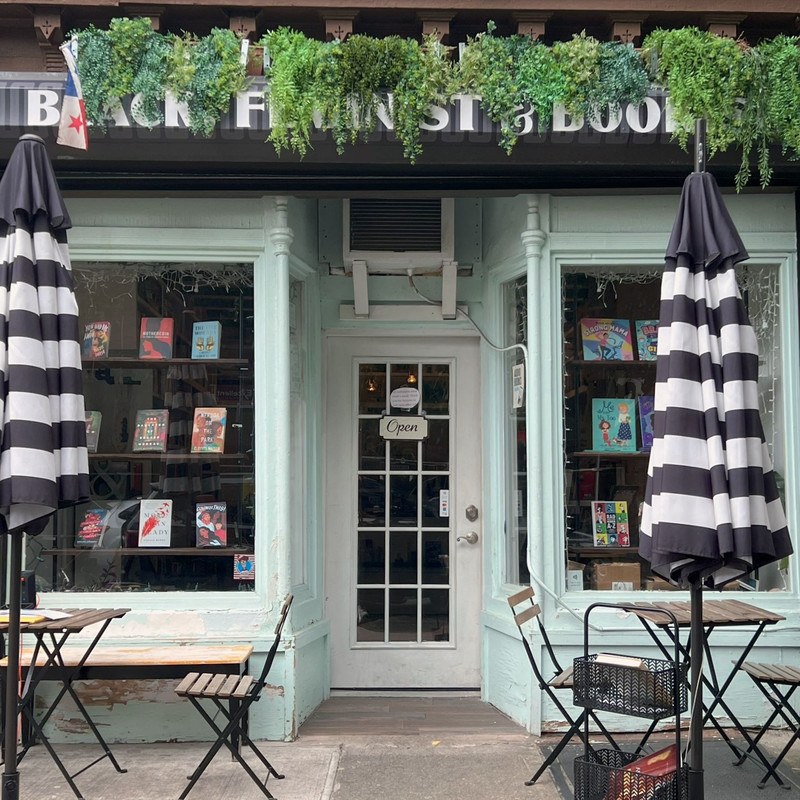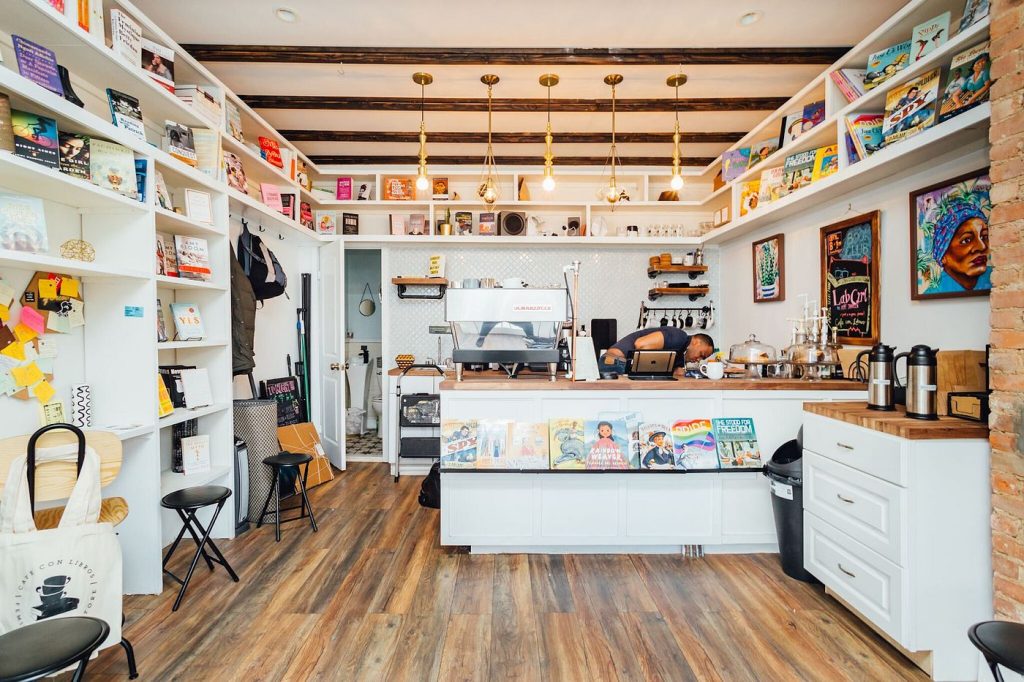Cafe con Libros Brews Change for Crown Heights

On August 19th, 1991, Rabbi Menachem Schneerson is being escorted by a motorcade from visiting his wife’s grave back to his home in Crown Heights, Brooklyn, when the final car falls behind the others. The driver, in an attempt to catch up, runs a red light, loses control of the vehicle, and pins two seven-year-old Black children against the side of a building, killing one and seriously injuring the other. After the dust had settled from the initial chaos, the Black community rallied around the death of the child and the perceived inequality between the medical attention given to the driver compared to him. By the time night had fallen, an angry crowd had gathered, and at 11:25 p.m., police found the body of a Hasidic Jew stabbed on Kingston Avenue by two Black youths who had left the angry crowd looking for revenge (Chang et al.). Over the next few days, Black and Jewish protestors alike gathered to hurl insults, as well as rocks and bottles, at each other. Accusing one of racism, the other of anti-Semitism in what would be known to history as the Crown Heights riots. It would be several years before the area known as Crown Heights returned to a quiet peace between the two communities.
Crown Heights has historically been a place for Black culture, particularly Afro-Caribbean culture, to thrive in Brooklyn alongside the small, but significant Hasidic Jewish population (Schaefer 350). The 2021 census estimates the population of Crown Heights to be 138,614, and of that 43.4% identify as Black (“Crown Heights…”). The settlement of the region began in the 1830s with two small villages founded by African Americans, called Weeksville and Carrville, where a large free Black population grew (Schaefer 350). When the villages were destroyed during the urbanization of the area in the later 1910s, Crown Heights became home to “an upwardly mobile, rapidly assimilating elite of Eastern European Jews and other White European immigrants” (Schaefer 350). A boom in population came in the 1940s and 1950s, when “these established residents were joined by the communities that have come to make up today’s Crown Heights: Hasidic Jews, arriving in New York as Holocaust refugees, and Black migrants, both African American and Afro-Caribbean, drawn in part by the city’s booming wartime economy” (Schaefer 350).
Within this small portion of Brooklyn known as Crown Heights, one can find not only large swaths of Caribbean restaurants and a thriving Afro-Caribbean community, but also over ten separate churches of all faiths.

At the junction of Prospect Place and Rogers Avenue (just four blocks removed from Kingston Avenue, where Yankel Rosenbaum was found dead), lies a small bookshop and café called Café con Libros, with the words “BLACK, FEMINIST, & BOOKISH” scrawled in big white letters across the black awning. The shop interior is almost entirely empty, except for the shelves lining the two side walls from floor to ceiling, with a clear path to the tiny front counter which is littered with coffee cups, pastries on display, and a sign saying, “no cash please.” It is clear that this place is not meant for more than five or six people to be in here at a time, browsing books or drinking coffee, or sometimes both.

This small piece of the giant that is New York City is not somewhere that blends into the background, but instead a place, just as Tim Cresswell defines it in Place: A Short Introduction. Firstly, the location of the bookstore: it is tucked away between a restaurant and a block of Victorian style townhouses, far away from most other businesses in Crown Heights (Cresswell 7). Secondly, the locale, or “the material setting for social relations,” which can be seen in Café con Libros’ events page on their website (Cresswell 7). They host author events, book clubs, and other such gatherings to bring the community together and engage with one another. Laura Miller touches on this idea of community engagement as well in Reluctant Capitalists, saying how the independent bookstores began to advertise themselves as a place to “build community solidarity” (118). By depicting their bookstore as not only a shop, but as a community center and place to build connections, Café con Libros is catering to the modern consumer, who wants entertainment with their daily shopping. Finally, Cresswell emphasizes the “sense of place” in his work, which is clear in Crown Heights’ history (7). This location has meaning not only to the owners of the store, but also to the community. The riots of Crown Heights were a mere 30 years ago, and many residents will remember them clearly. A bookstore that broadcasts its stock being from Black authors represents a strong community that has gone through hardship and violence together. When I look at the images of this unassuming little bookstore and café, I don’t just see books and coffee, but decades of tension, riots, and hard work towards getting and maintaining peace.
Sources:
Information/History
Chang, Dean, et al. “Fatal Crash Sparks Crown Heights Riots in 1991.” New York Daily News, New York Daily News, 21 Apr. 1991, www.nydailynews.com/2016/08/18/fatal-crash-sparks-crown-heights-riots-in-1991/.
Cresswell, Tim. Place: A Short Introduction. Blackwell Publishing, 2004.
“Crown Heights/Prospect Heights Neighborhood Profile.” NYU Furman Center, furmancenter.org/neighborhoods/view/crown-heights-prospect-heights. Accessed 18 Sept. 2023.
“Intersectional Feminist Bookstore: Cafe Con Libros: New York.” Cafe Con Libros, www.cafeconlibrosbk.com/. Accessed 18 Sept. 2023.
Miller, Laura J. Reluctant Capitalists. The University of Chicago Press, 2006.
Schaefer, Richard T. Encyclopedia of Race, Ethnicity, and Society. SAGE, 2008.
Images
Exterior of Café con Libros. “Café con Libros” 23 Jun. 2023. Poets & Writers, https://www.pw.org/literary_places/cafe_con_libros.
Major, Joe. Protestors marching to Lubovitcher Synagogue. “PHOTOS: 1991 Crown Heights riots in pictures” 19 Aug. 2016. ABC7NY, https://abc7ny.com/crown-heights-riots-1991-tension-archive/1476212/.
Setter, Chris. Interior of Café con Libros. “Badass Women: Kalima DeSuze, founder of feminist bookstore, Cafe con Libros” by Rebecca Kobert, 28 Jun. 2018. Medium, https://medium.com/coconuts/badass-women-kalima-desuze-founder-of-feminist-bookstore-cafe-con-libros-c64e0f8ed358.
Map
Map created by Megan DeAngelo using mymaps.google.com

0 Comments